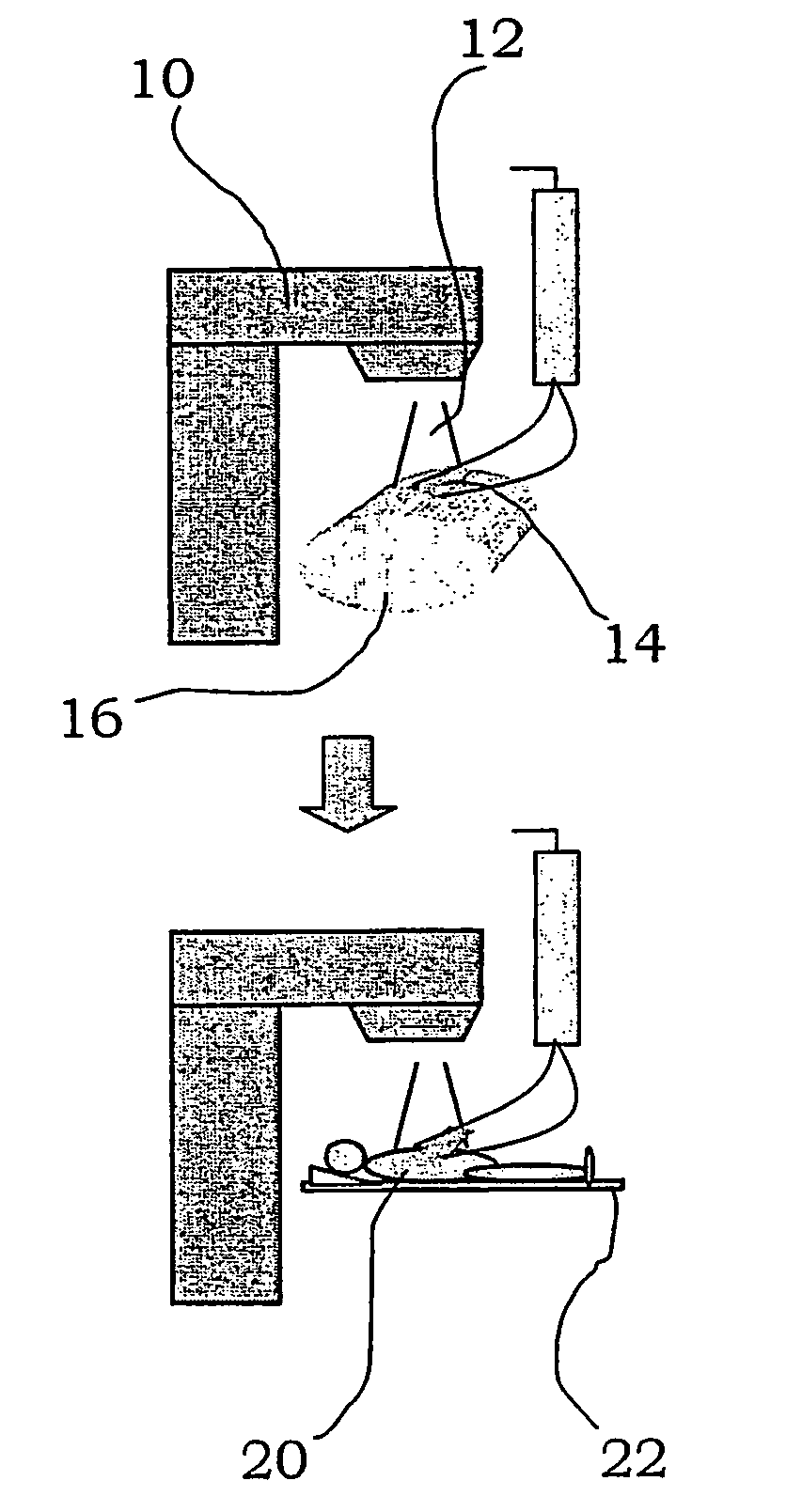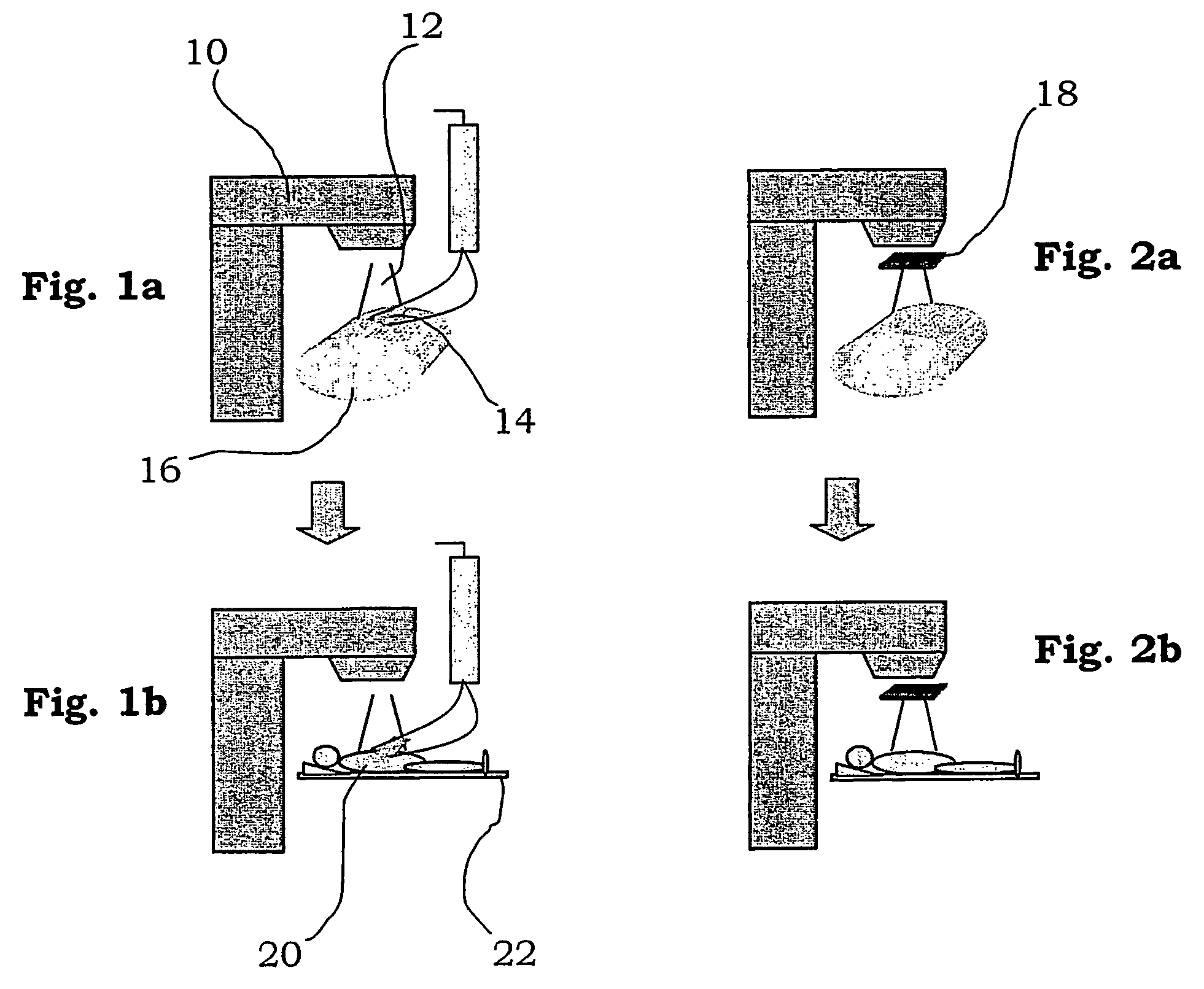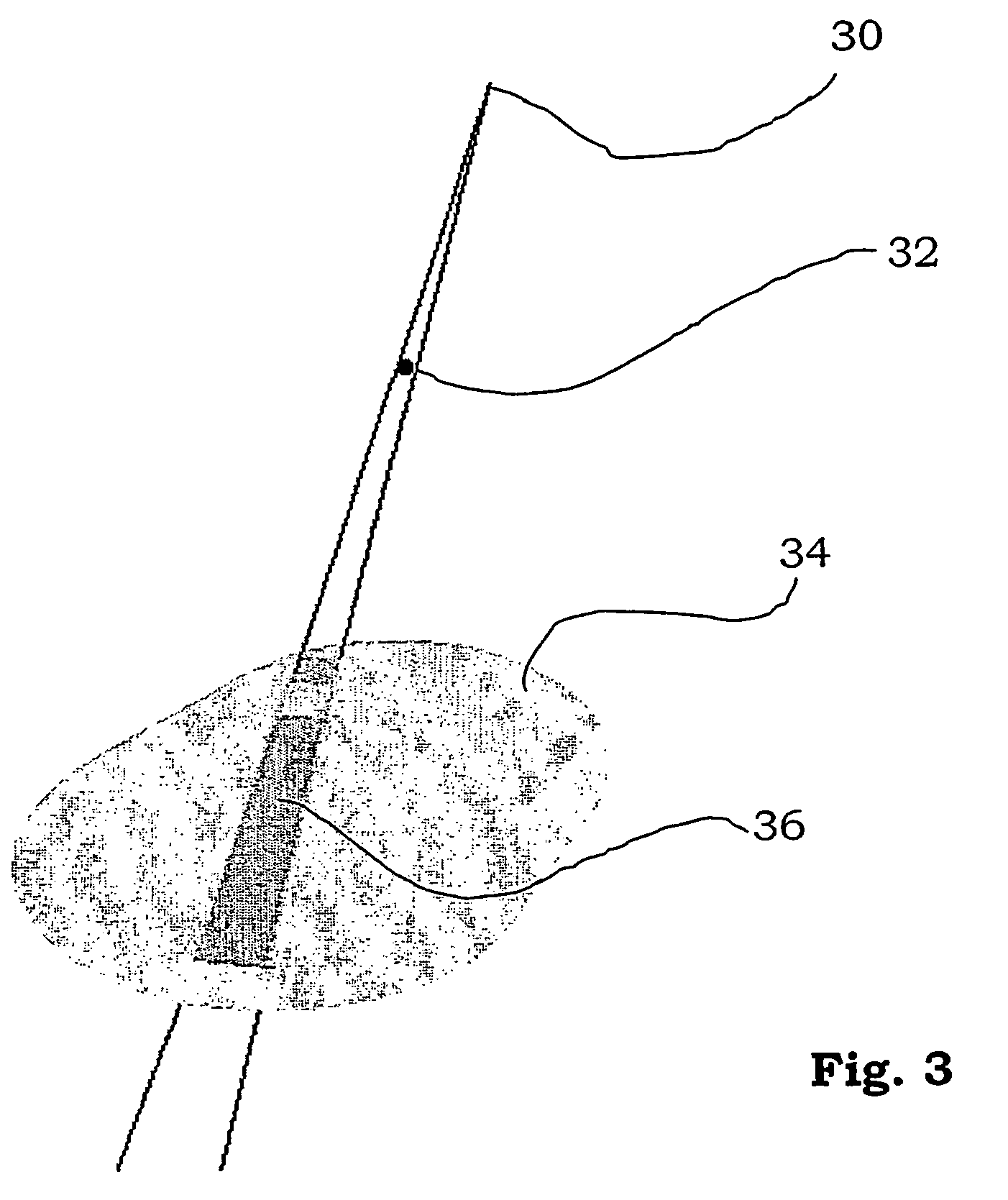Method for performing in vivo dosimetry
a dosimetry and in vivo technology, applied in the field of calibrating detectors, can solve the problems of inability to control the primary tumour, occurrence of metastases, complicated treatment techniques, etc., and achieve the effects of reliable dose measurement, time-efficient and accurate, and high quality
- Summary
- Abstract
- Description
- Claims
- Application Information
AI Technical Summary
Benefits of technology
Problems solved by technology
Method used
Image
Examples
Embodiment Construction
[0026]A radiotherapy device utilised for treating tumours with radiation is shown schematically in FIGS. 1-2 and is generally denoted with reference numeral 10. The device comprises a radiotherapy system capable of emitting a beam 12 of electrons or photons from a treatment head. The radiotherapy system is provided with conventional field-shaping device (not shown), for example an MLC, for allowing the lateral shape of the beam to be altered so as to shield off non-affected areas of the body and concentrate the beam to the tumour. Control means (not shown) are provided for the radiotherapy system.
[0027]A table 22 is arranged for a patient 20 to lie on. The table is rotatable around a vertical axis, and movable horizontally and vertically in order to place the area to be treated of the patient in the area of the beam. Further, the method according to the invention utilises different detectors for measuring the radiation emitted from the radiotherapy device. They may for example compr...
PUM
 Login to View More
Login to View More Abstract
Description
Claims
Application Information
 Login to View More
Login to View More - R&D
- Intellectual Property
- Life Sciences
- Materials
- Tech Scout
- Unparalleled Data Quality
- Higher Quality Content
- 60% Fewer Hallucinations
Browse by: Latest US Patents, China's latest patents, Technical Efficacy Thesaurus, Application Domain, Technology Topic, Popular Technical Reports.
© 2025 PatSnap. All rights reserved.Legal|Privacy policy|Modern Slavery Act Transparency Statement|Sitemap|About US| Contact US: help@patsnap.com



